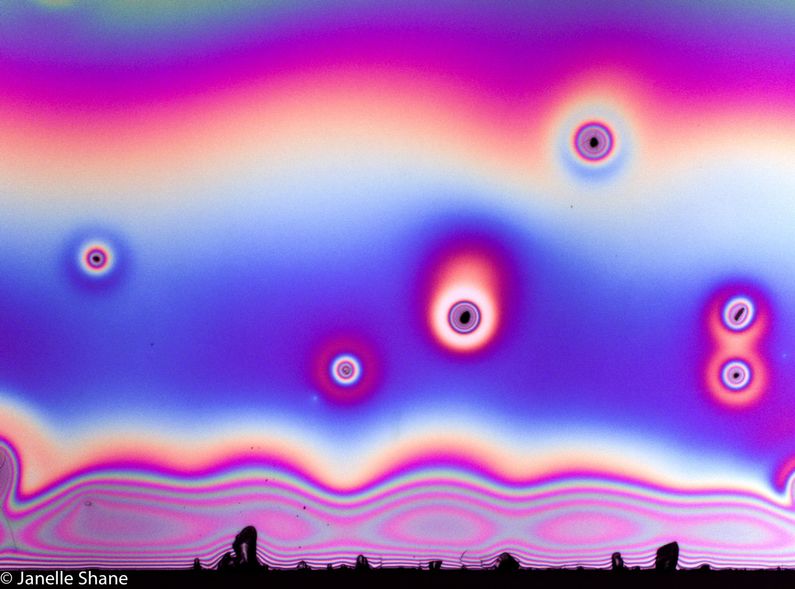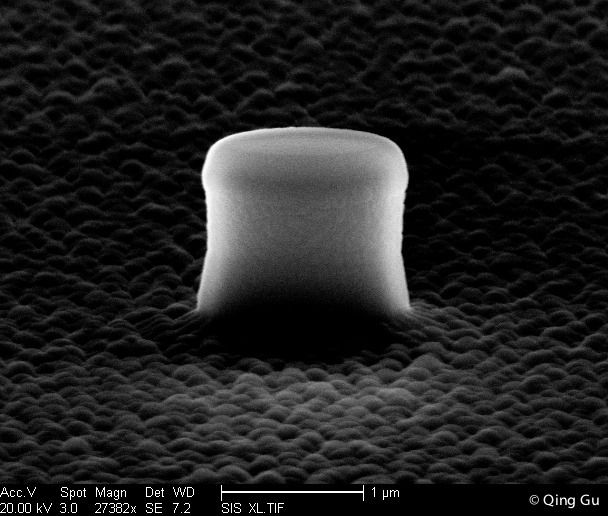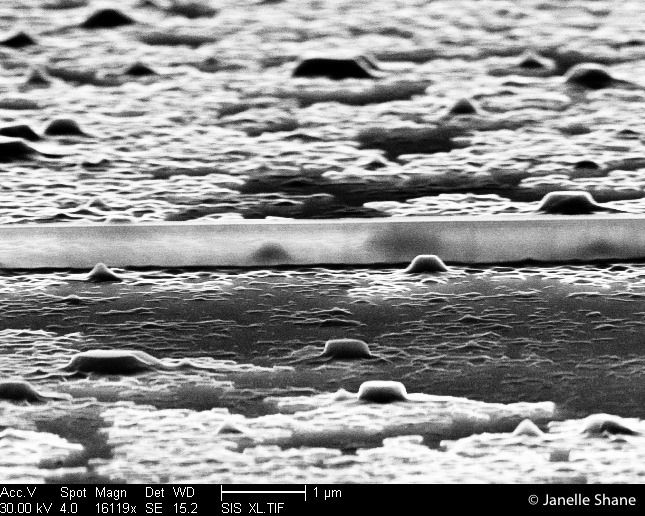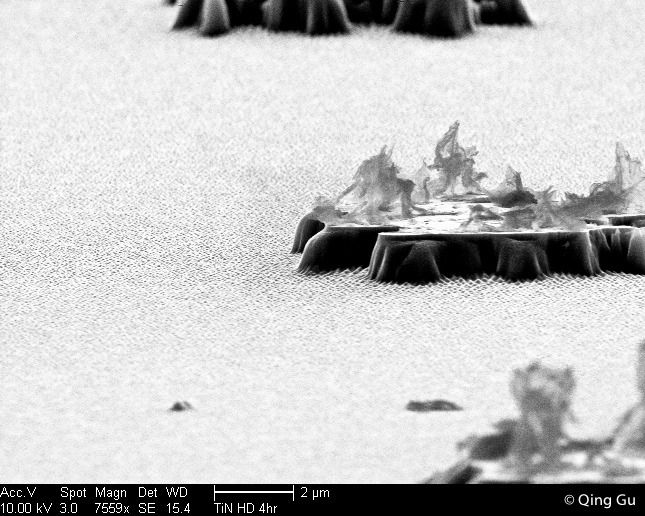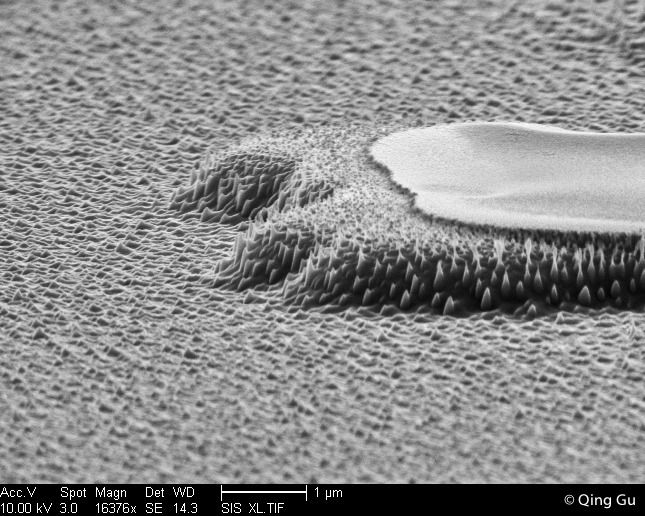Oops. When we’re making nano-devices, chaos is usually bad. I named this spot
“The Barrens”.
It’s supposed to be a single straight waveguide (basically, a pipe for light)
stretching off into infinity. Instead, this spot got scratched partway through
the fabrication process, leaving behind a chaotic landscape that



